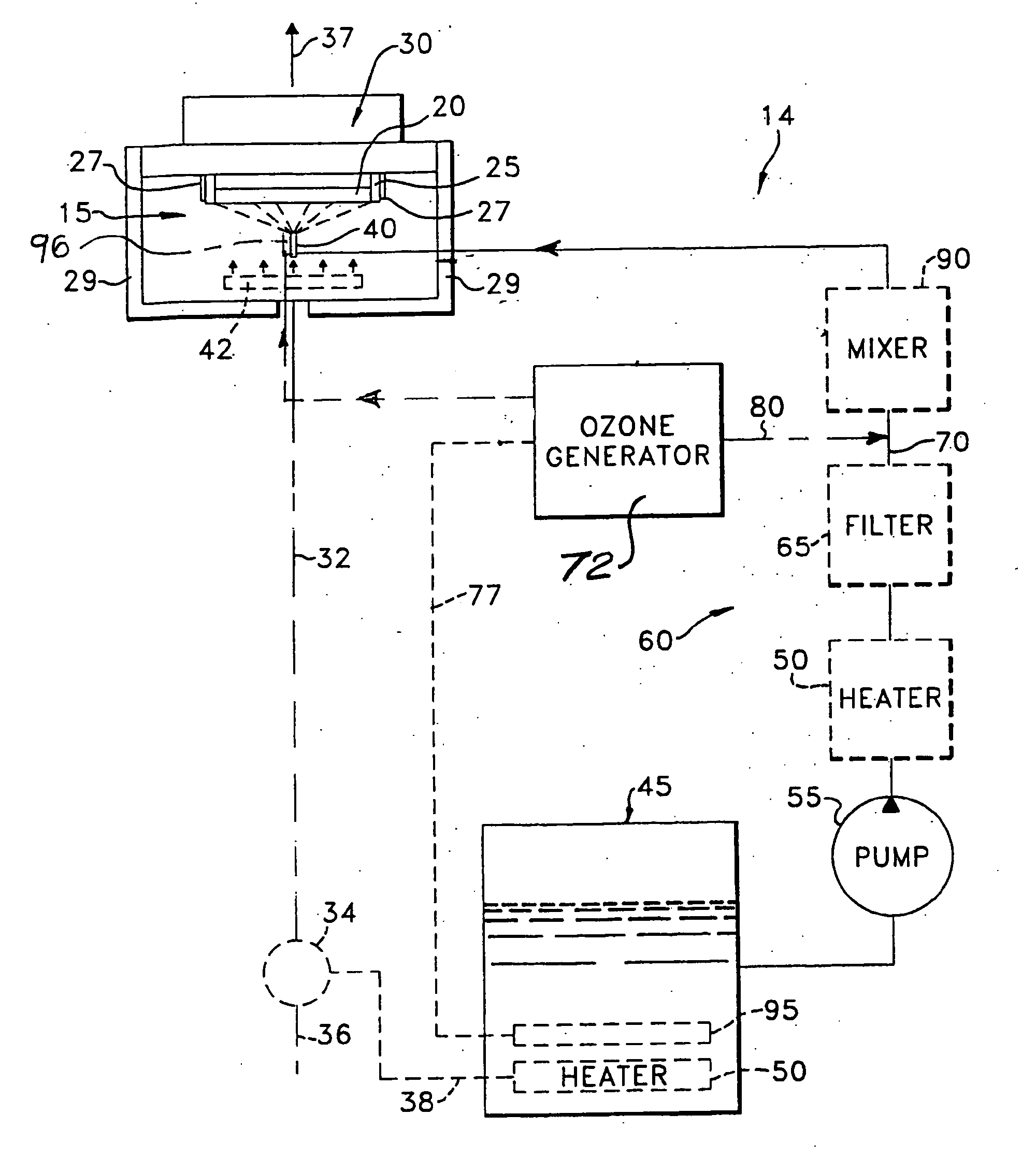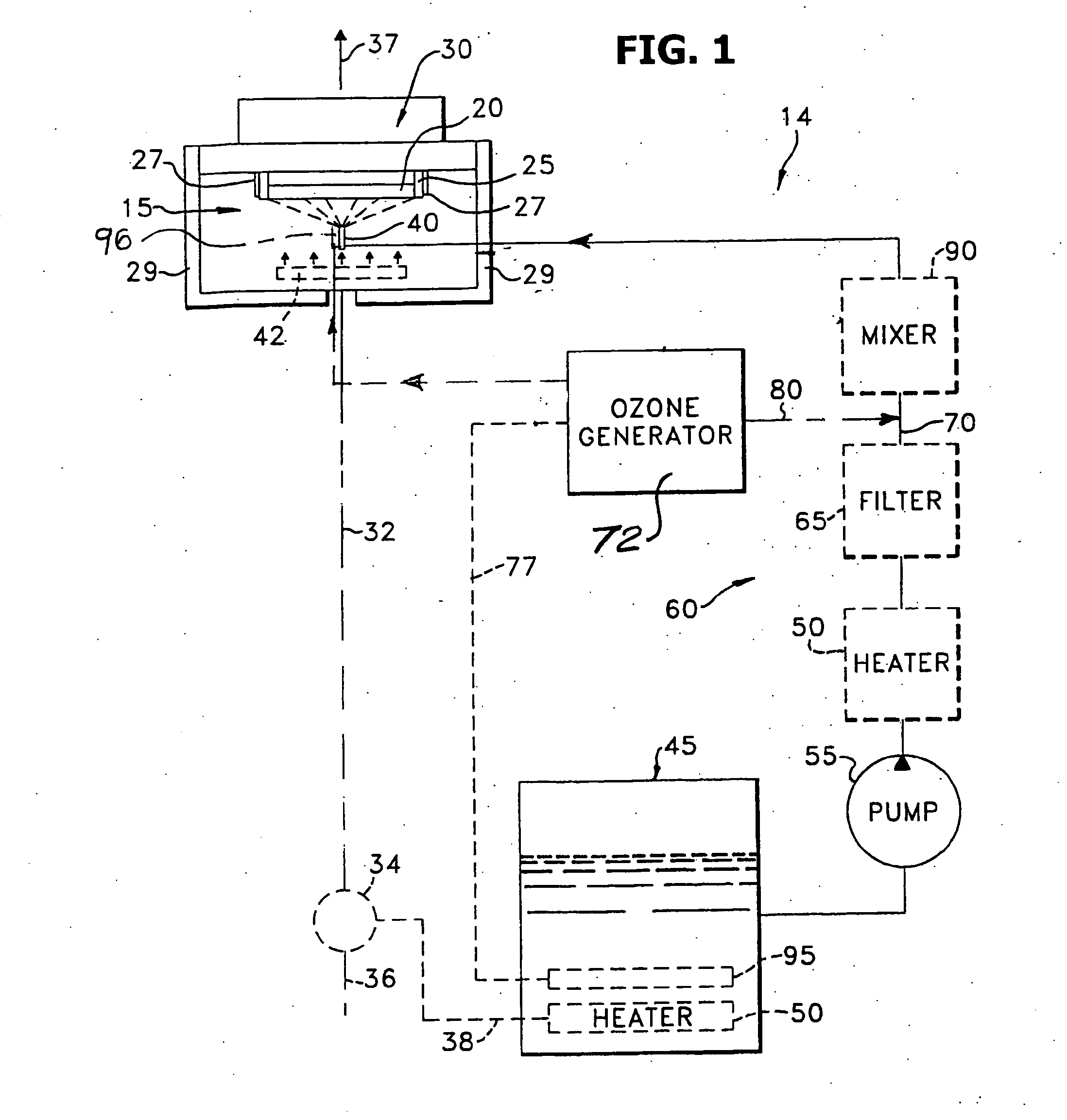Processing a workpiece with ozone and a halogenated additive
a technology of halogenated additives and workpieces, applied in the direction of sustainable manufacturing/processing, final product manufacturing, cleaning using liquids, etc., to achieve the effect of not easily removed, effective removal, and rapid and complete removal
- Summary
- Abstract
- Description
- Claims
- Application Information
AI Technical Summary
Benefits of technology
Problems solved by technology
Method used
Image
Examples
Embodiment Construction
[0045] A silicon wafer having a hardened residual layer of photoresist about 1200A-1500A thick and an underlying SLAM (Sacrificial Light Absorbing Layer) layer about 2500 thick was processed as described above. SLAM is one form of an ARC or anti-reflective coating. The wafer was rotated at 1000 rpm. A solution of 49% (weight) HF in de-ionized water was further diluted to a concentration within the range of 0.01 to about 1% (by weight). This solution was heated to 90° C. and sprayed onto the spinning wafer at a flow rate of 500-800 ml / minute. Ozone gas was delivered into the process chamber at about 10 slpm and a concentration of 240 g / m3. The process was performed for 8:00 minutes. The photoresist layer and the SLAM layer were both removed. There was no detectable attack of the carbon doped oxide (CDO) dielectric layer.
[0046] Other halogenated additives, especially fluorinated additives, may be used instead of HF, for example NH4F. The ozone can be supplied dissolved in the water, ...
PUM
 Login to View More
Login to View More Abstract
Description
Claims
Application Information
 Login to View More
Login to View More - R&D
- Intellectual Property
- Life Sciences
- Materials
- Tech Scout
- Unparalleled Data Quality
- Higher Quality Content
- 60% Fewer Hallucinations
Browse by: Latest US Patents, China's latest patents, Technical Efficacy Thesaurus, Application Domain, Technology Topic, Popular Technical Reports.
© 2025 PatSnap. All rights reserved.Legal|Privacy policy|Modern Slavery Act Transparency Statement|Sitemap|About US| Contact US: help@patsnap.com



